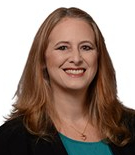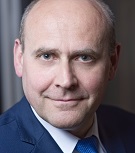Dear Colleagues,
It is our pleasure to invite you to join us for The Virtual 5th EAAR Annual Conference on New Medical Device Regulations (RMD2021).
Following the success of the Conference in Prague in 2016, Berlin in 2017 and Brussels in 2018 and 2019, you will have the opportunity to gain a better understanding of the implementation of the new European regulations on medical devices at this Fifth Conference.
The application date of the Medical Device Regulation is only a few months away. Additional regulations (implementing acts) and new guidance are issued frequently adding to the complexity. It is important to keep up-to-date with the fast evolving compliance scene.
In conjunction with EAAR (European Association of Authorized Representatives), our excellent panel of experienced professionals in this field will once again ensure a conference of noteworthy quality.
We look forward to welcoming you online to RMD2021 – The Virtual 5th EAAR Annual Conference on New Medical Device Regulations.

Mika Reinikainen
RMD2021 Conference Chair
Conference Program

Deputy Head of Unit, European Commission, Directorate General for Health and Food Safety (SANTE) Medical Devices and Health Technology Assessment Unit, Belgium
Erik will provide an update on the preparations for the application of the new regulations from a Commission perspective also touching upon the priority that is being given to Covid-19 related issues.

Partner, Axon Lawyers, The Netherlands

Head of Department for Medical Devices, The Swedish Medical Products Agency, Sweden
National Competent Authorities have several tasks under MDR and IVDR.
Main task for most of them is to conduct effective market surveillance. Helena will
give some examples illustrating challenges the authorities may face when we are
reaching the date of application for MDR and IVDR.

Managing Director, MEDCERT GmbH, Germany
Notified Bodies play a key role in the implementation of the MDR and are the “final step” of
the very long and extremely important “preparation and certification process” of a
manufacturer of medical devices. It is well understood that challenges of the Notified Body
have an impact also on the manufacturer and challenges of the manufacturer have also an
impact on the Notified Body.
Taking this into account, Mr. Klaus-Dieter Ziel, Managing Director of the Notified Body
MEDCERT GmbH gives a presentation on his 4 main challenges, which are 1) initial MDR
audits under COVID-19, 2) the huge number of additional guidance documents which must
be taken into account, 3) the important differences of an MDD compared to an MDR
conformity assessment process and 4) the extremely high number of MDD certificates
expiring in 2023/2024.

Senior Manager Regulations & Industrial Policy, MedTech Europe, Belgium

VP Regulatory Compliance, Qserve Group, USA
The new European regulations have presented the medical device industry with new challenges in order to ensure compliance to the MDR and continue placing medical devices on the EU market. This session will identify the key challenges experienced by non-European medical device manufacturers in preparing for compliance to the MDR, and the lessons learned and/or strategies being used by medical device manufacturers to address these challenges.

Chairman of the Board, EAAR; Managing Director, Abnovo, UK
The changes in the scope and classification brought about by the new medical device regulation are evolutionary rather than revolutionary. They mainly reflect lessons learned and technological changes. A significant change is the addition of devices without a medical purpose within the scope of the regulation. The impact of technological change can be seen in the new rules on software, nanotechnology and closed loop systems. The new requirements add to the complexity of compliance and imply the need of guidance. Some of this is already published and more is on its way.

Member of the Board, EAAR, CEO, QMed Consulting, Denmark
Most Medical Device Manufacturers knows how to structure and analyse related risks, but not many knows how to structure the benefit analysis to be able to complete the Benefit – Risk Assessment. Helene will provide you with a method to structure and analyse this process according to the new medical device regulations.

Chairman of the Board, EAAR; Managing Director, Abnovo, UK
The Essential Requirements of the Directives have become the General Safety and Performance Requirements in the regulations. The original requirements have been mostly retained, but much detail has been added. New areas have been introduced such as cybersecurity, apps, CMR substances and nanomaterials.

Member of the Board, EAAR, CEO, QMed Consulting, Denmark
Helene will teach you the overall processes in conducting a clinical evaluation; understand the requirement, the different stages and what other processes are connected to the clinical evaluation process.

Member of the Board, EAAR, President, Donawa Lifescience, Italy

EAAR Vice-Chairman, President, Medical Device Safety Service, Germany

Vice-President, Team-PRRC, UK
This session explains the goals and objectives of the non-profit organisation, Team_PRRC set up last year to support individuals in the role of PRRC under the EU medical device regulations. It covers the basics of the qualifications and role of a PRRC along with the ways in which Team-PRRC aims to help those undertaking this new responsibility.

Chairman, UKRPA

CEO, Qunique GmbH, Germany
The Medical Device and In-Vitro Diagnostic legislations underwent the biggest change in the history with the publication of the two regulations 2017/745 and 2017/746 in May 2017. Since the publication of those regulations the various stakeholders are trying to understand the new requirements and to identify the Gaps to be closed in order to ensure continuous compliance and product availability on the EU market after date of applications of both regulations. Various guidance documents and FAQ publications were published, but the number of remaining open questions is still high. During this presentation the challenges of the new requirements of the MDR and IVDR will be presented by explaining the key changes to the QMS Obligations. A summary of the QMS obligations to be fulfilled before date of application of both regulations will be also given.

EAAR Vice-Chairman, President, Medical Device Safety Service, Germany

EAAR Member of the Board, Senior Global Regulatory Consultant, Emergo, The Netherlands

EAAR Vice-Chairman, President, Medical Device Safety Service, Germany

EAAR Member of the Board, Chief Compliance Officer, Obelis, Belgium

Member of the Board, EAAR, Co-owner & Principal Consultant, Qarad, Belgium
The IVD industry is being faced with a significant challenge. The path to compliance to the IVD-R is scattered with obstacles ranging from the lack of clear guideline documents, still too few available Notified Bodies, lack of EU Reference Labs, etc. With only few months left to prepare and send to the Notified Body their submissions, IVD manufacturers must do it right first time in order to avoid the potential discontinuation of their devices on the EU market. This presentation will address the most sensitive of these obstacles with some practical hints on how to overcome them.

EAAR Member of the Board, Chairman of the Board, QAdvis, Sweden

EAAR Member of the Board, Consulting Partner, Tecno-med Ingenieros, SL, Spain
Traditionally, custom-made medical devices have benefitted from a reduced regulatory burden under Directive 93/42/EEC, with a general understanding that they are necessarily low-volume or once-off productions. However, advancing computer-driven technologies (such as CAM milling, additive production methods and 3D printing) have enabled production of devices that can be personalized to a patient’s specific anatomy. These advances have blurred the lines separating “series-produced” devices based on validated designs and “true” custom-made devices where device design specifications are (at least in part) established by an authorised prescribing professional. The Medical Device Regulation 2017/745 establishes a revised definition of “custom-made device” that excludes devices which are mass-produced by means of industrial manufacturing processes. In parallel, the Internal Medical Device Regulators Forum (IMDRF) has published a guidance document establishing that “patient-adapted” or “patient-specific” devices cannot be considered to be custom-made devices. These shifts in technology and in regulatory criteria may change the status quo for many devices which, to-date, have been considered to be custom-made. In this presentation, we shall explore the new MDR definition as well as the related IMDRF concepts so that manufacturers can determine if their personalized devices still fit the new MDR definition of “custom-made device”. If not, they will need to reconsider the conformity evaluation procedure of these devices as regular, series-produced devices bearing the CE marking.

Unit Manager – Devices Regulatory Policy, Devices Division, Medicines and Healthcare Products Regulatory Agency, UK
Following the end of the transition period with the EU, the UK has introduced some regulatory changes for how devices will be placed on the UK market. This presentation will cover what those key changes will be, as well as the future opportunities for device regulation in the UK.
ONE TO ONE MEETINGS
Meet the Speakers

CEO, Qunique GmbH, Germany

Deputy Head of Unit, European Commission, Directorate General for Health and Food Safety (SANTE) Medical Devices and Health Technology Assessment Unit, Belgium

VP Regulatory Compliance, Qserve Group, USA

Member of the Board, EAAR, CEO, QMed Consulting, Denmark

Member of the Board, EAAR, Co-owner & Principal Consultant, Qarad, Belgium

Unit Manager – Devices Regulatory Policy, Devices Division, Medicines and Healthcare Products Regulatory Agency, UK

Partner, Axon Lawyers, The Netherlands

Contact Us
We look forward to hearing from you.


